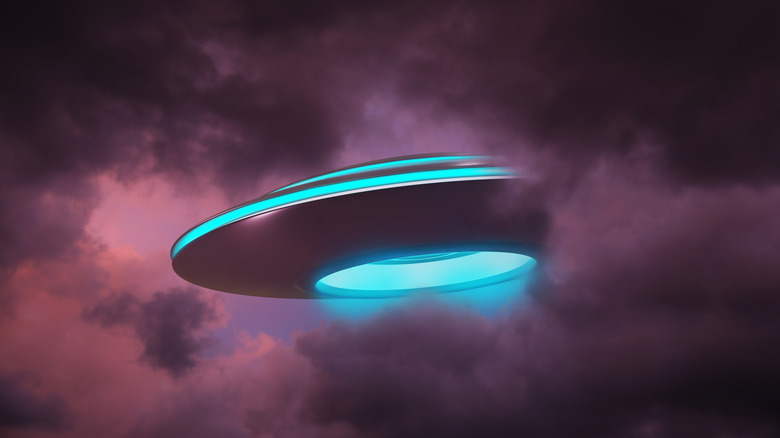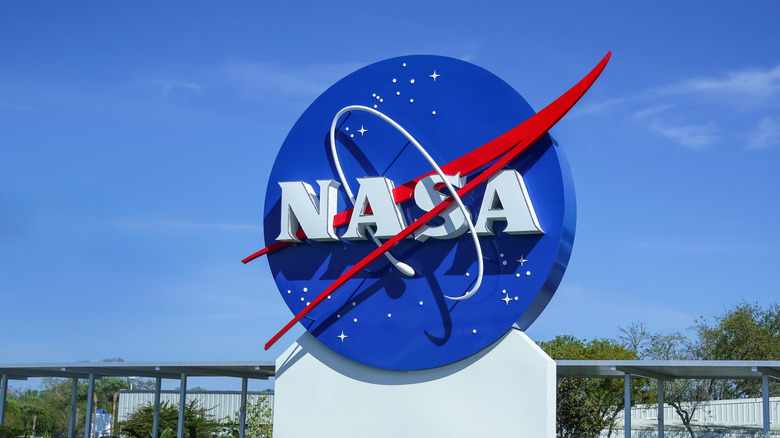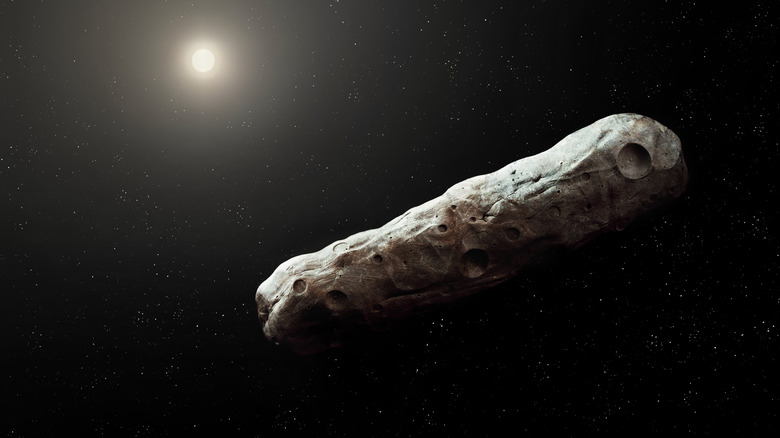This Harvard Scientist Says An Incoming Comet Could Be An Alien Ship. Here's Why He Might Be Right
If you met someone in a bar or cafe and they told you that they believed they had seen a UFO, would you believe them? You could, of course, take them at their word: that the sighting had been of an actual interplanetary craft from a distant alien civilization. Or, if you were so inclined, you could deride their claim and tell the person directly that their claim was bogus. Or perhaps instead you would decide to humor the person, assuming that while the UFO was either a figment of their imagination or something more prosaic that they had misidentified, your interlocutor themselves believed the sighting was real, even if you do not.
Now, what if such a claim wasn't just a random person in a bar or cafe, but rather a renowned scientist whose specialisms included both space and the possibility of alien life? Well, that's what happened in July 2025, when Abraham "Avi" Loeb, a Harvard University professor and theoretical physicist who is an expert on astrophysics and cosmology, called for the scientific community to take seriously a newly discovered object that had entered the solar system. Its intense level of brightness appeared to be something very unusual indeed.
The discovery of 3I/ATLAS
3I/ATLAS is named after the Asteroid Terrestrial-impact Last Alert System, a NASA-funded survey telescope located in Rio Hurtado, Chile, from which it was first identified on July 1, 2025. Its trajectory has since been confirmed using data from several other telescopes, which together have archival data on the object dating back to June 14. The "I" in its name refers to the fact that it is an interstellar object, meaning it has arrived from outside our Solar System and does not follow an orbital trajectory around our sun. Meanwhile, the "3" indicates that it is the third such object to have been discovered using ATLAS technology.
Astronomers have confirmed that 3I/ATLAS is traveling through the galaxy at around 137,000 miles per hour, and though it will enter the inner Solar System, it poses no threat to Earth, passing our planet at a distance of around 150 million miles. However, data has so far been unable to confirm its exact size, though investigations continue. The NASA website lists 3I/ATLAS as a comet, an object made of ice, rock, gas, and dust.
Abraham Loeb's sensational hypotheses
But according to Professor Abraham Loeb, 3I/ATLAS might not be a comet at all. In an interview with WBZ News, he suggested that the scientific community ought to consider the possibility that the object is an alien probe from another galaxy (via CBS News). He claimed that the brightness of the object, if it were made of rock, would mean it would have to be the size of Manhattan, and its scale twice that of the impactor that caused the Cretaceous mass extinction, aka, wiped out the dinosaurs. Otherwise, if it were an icy comet losing mass as it is heated by the sun, the brightness could be dust created by its losing mass as it travels, but Loeb notes other identifiers typical of comets are currently missing.
Loeb advised that we should keep all possibilities open when it comes to identifying 3I/ATLAS, including the chance that it derived from an alien source. "I think that when we have a blind date from a visitor from another star, all bets are off ... We shouldn't assume anything, and we should assess the risk given the data that we have" (via CBS News).
He noted the object's unusual trajectory, which passes close to the inner planets at a similar plane to that at which the Earth circles the sun, but which means that when it is closest to the center of the galaxy and at its brightest, we will be unable to observe it from Earth. Loeb suggests that the improbability of this trajectory raises the question that it may have been "designed."
Scientists are generally skeptical of Avi Loeb's claims
Abraham Loeb has precedent when it comes to making grand claims about extraterrestrial objects. He has been especially vocal about 'Oumuamua, the strange, cigar-shaped object that passed through the Solar System in 2017. Suggesting, as with 3I/ATLAS, that the object may be an alien probe from another galaxy. Loeb was an adviser on the Breakthrough Listen project, which scanned the object the same year for radio signals suggesting that it may have contained technology similar to our own. Scans revealed no such signals, though Loeb continued to publish papers on his 'Oumuamua alien craft theory as recently as 2023, a year in which Loeb also traveled to Papua New Guinea to investigate fragments of a meteor that hit the Earth in 2014 for signs that it may, too, have been an alien craft.
Loeb's willingness to embrace earth-shattering hypotheses in his research could be described charitably as an academic seeking to remind both their colleagues and the public of the speculation required in the scientific process. However, Loeb has certainly come under fire from the scientific community, accusing him both of flawed field research and self-deception. Some commentators have gone so far as to describe him as an outright fraud.
But many serious scientists do believe in alien life
However, the criticism that Abraham Loeb has received does not in any way mean that scientists refuse to consider the possibility of alien life, or have refused to make steps in their field to test whether we have company in the universe. Famously, the scientist, writer, and broadcaster Carl Sagan, whose documentary series "Cosmos" introduced millions of viewers to the problems of astronomy and physics in the 1980s, was one of the founders of the SETI (Search for Extra-Terrestrial Intelligence) Institute. Sagan spoke openly about his belief that, mathematically speaking, the possibility that there is life on other planets is high, and he was involved in projects that both sought out signs of alien life, and which saw cultural artifacts launched into space that would give extraterrestrials insights into human civilization if discovered.
Meanwhile, Stephen Hawking was also willing to discuss the possibility of alien life sharing his belief that alien visitors likely represented a danger to Earth. Such craft, if it existed, would come from a civilization with technology far in advance of our own, and would possibly be in search of resources, which it could feasibly look to extract from humanity.
Abraham Loeb has suggested that, when it comes to risk, Earth ought to categorize interstellar objects as we do natural disasters using a scale, with the possibility of alien life in the Solar System representing a greater danger to humanity than space rocks. Whether Hawking might indeed have agreed with Loeb that interstellar objects ought to be graded by risk is a topic it is interesting to speculate about.



